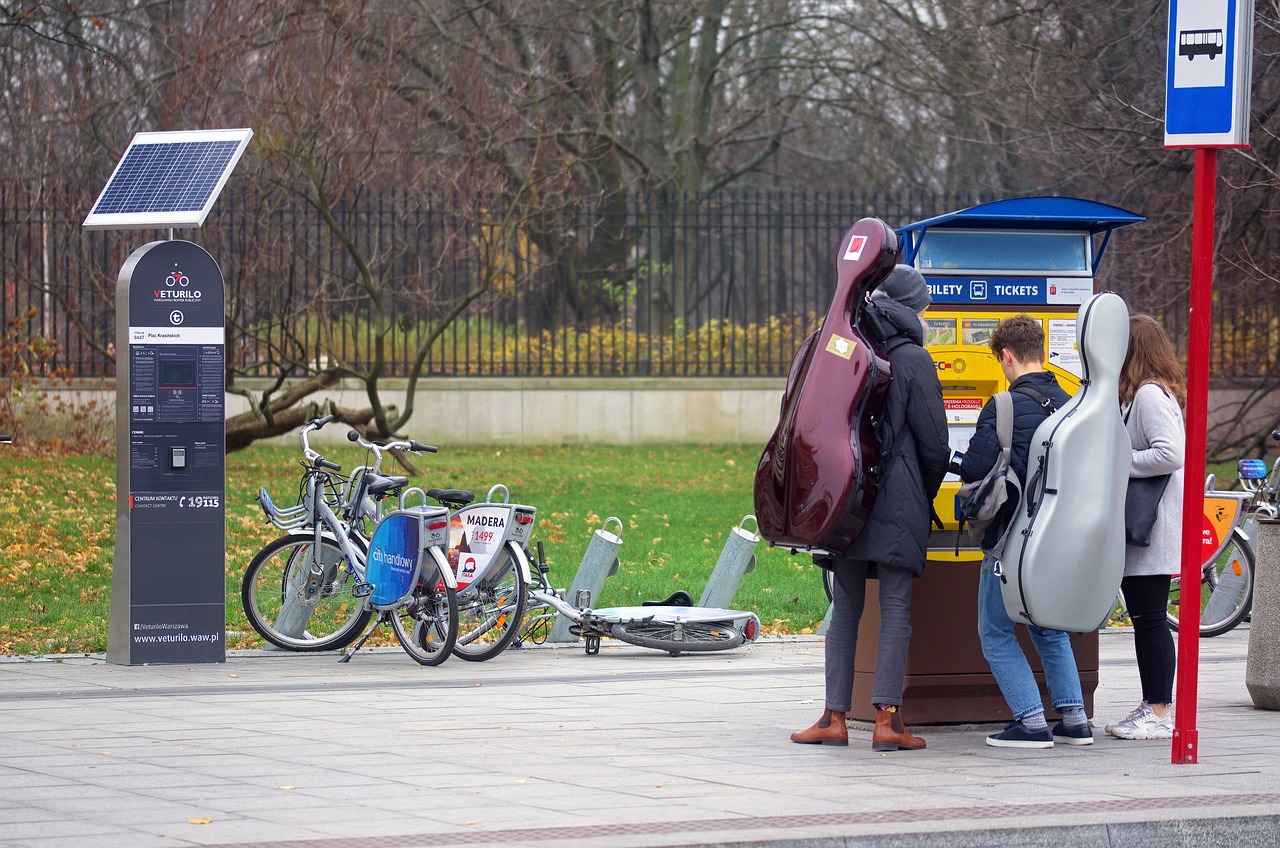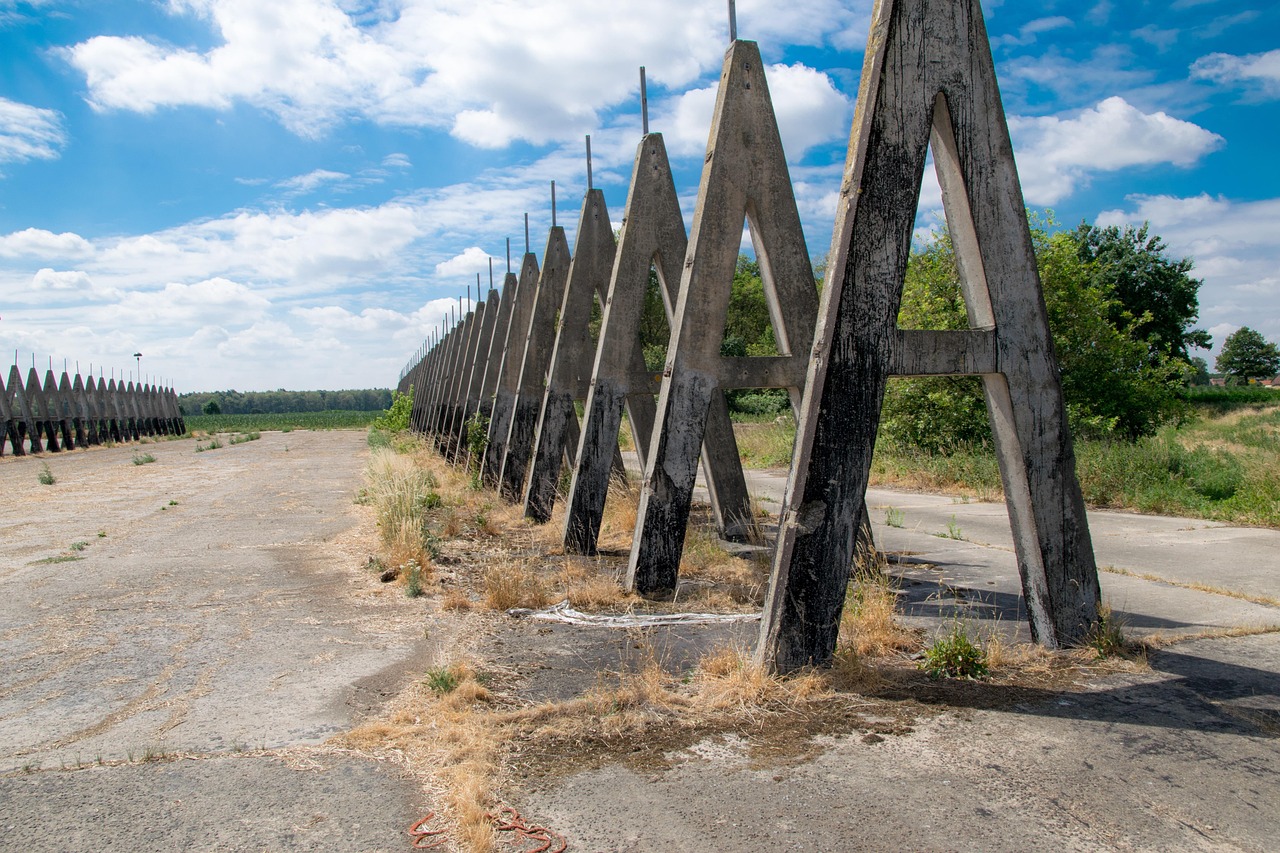This article provides an in-depth analysis of Bobcat rental costs, factors influencing pricing, and tips for maximizing your rental experience. Discover everything you need to know about renting a Bobcat effectively.
Understanding the average rental prices for Bobcats can help you budget effectively. Generally, the costs can range from $200 to $1,000 per day, depending on the model and rental duration. Weekly rates can offer savings, typically ranging from $800 to $3,500. Prices may vary based on the location, type of Bobcat, and any additional attachments required.
Several factors affect the rental price of a Bobcat, including:
- Demand: High demand during peak seasons can lead to increased prices.
- Seasonality: Renting during off-peak seasons may yield lower rates.
- Rental Duration: Longer rental periods often result in better pricing.
Rental prices can fluctuate significantly based on geographic location. Urban areas may have higher rates compared to rural locations due to demand and availability. For instance, renting in a metropolitan area might cost 20-30% more than in a less populated region.
Seasonal demand can impact rental costs, with peak seasons often leading to increased prices. Understanding these trends can help you plan your rental effectively. For example, construction projects tend to ramp up in spring and summer, leading to higher rental rates.
Different models and attachments can lead to varying rental rates. Knowing the specific Bobcat model you need can help you find the best price. For example, a standard Bobcat may be less expensive than a specialized model equipped for specific tasks.
Rental duration can greatly influence the overall cost. Understanding daily versus weekly rates can help you choose the most economical option. If your project extends beyond a week, consider negotiating a discounted weekly rate.
Beyond the base rental price, there are additional costs that may arise during your Bobcat rental. Being aware of these can help you avoid unexpected expenses:
- Insurance Requirements: Many rental companies require insurance for Bobcat rentals. Understanding these requirements can help you prepare adequately and avoid additional fees.
- Delivery and Pickup Fees: Delivery and pickup services may incur extra charges. Knowing these fees in advance can help you budget more accurately for your rental.
Selecting the right rental company can make a significant difference in your overall experience. Consider factors like reputation, customer service, and rental terms. Look for companies that offer transparent pricing and have a good track record.
Customer reviews can provide insights into the reliability and quality of service offered by rental companies. Look for consistent positive feedback regarding equipment condition and support.
Understanding the rental agreement terms is crucial. Pay attention to policies regarding damage, late returns, and equipment maintenance responsibilities. This knowledge can help you avoid potential disputes with the rental company.
Renting a Bobcat offers several advantages, including cost savings, flexibility, and access to the latest equipment without long-term commitment. Knowing these benefits can help you make an informed decision.
Renting allows you to avoid the high upfront costs of purchasing equipment. This can be particularly beneficial for short-term projects or occasional use. By renting, you can allocate your budget to other critical areas of your project.
Renting offers the flexibility to choose the right equipment for specific jobs without the burden of ownership. This can enhance productivity and efficiency on the job site, allowing you to focus on completing your project successfully.

What Are the Average Costs to Rent a Bobcat?
When it comes to construction, landscaping, or any heavy-duty project, renting a Bobcat can be an efficient solution. Understanding the average costs associated with renting a Bobcat is crucial for effective budgeting. Prices can fluctuate based on several factors, including location, rental duration, and the specific type of equipment you need.
On average, renting a Bobcat can cost anywhere from $200 to $1,000 per day, depending on the model and attachments required. For longer rental periods, many companies offer discounted weekly or monthly rates. For instance, a weekly rental might range from $800 to $3,500, while monthly rentals could be as low as $2,500 to $10,000.
Several key factors can influence the rental price of a Bobcat:
- Demand: High demand for Bobcats during peak construction seasons can drive prices up.
- Seasonality: Prices may vary with the seasons; for example, summer months often see increased rental rates.
- Rental Duration: Short-term rentals may have higher daily rates compared to long-term rentals.
- Model and Attachments: The specific model of the Bobcat and any additional attachments you require can significantly impact the cost.
Geographic location plays a vital role in rental pricing. Urban areas typically have higher rental costs due to increased demand and limited availability. Conversely, rural areas may offer lower rates, but the selection of equipment might be more limited.
Yes, seasonal demand can lead to price fluctuations. For instance, construction activity often peaks in the warmer months, resulting in higher rental costs. Understanding these trends can help you plan your rental more effectively, potentially allowing you to secure better rates during off-peak times.
Different Bobcat models come with varying rental rates. For example, a compact Bobcat may cost less than a larger, more powerful model. Additionally, specialized attachments such as buckets or forks can also affect the overall rental price. Knowing the specific model you require can aid in finding the most cost-effective option.
The duration of your rental can significantly influence the overall cost. Daily rates may seem affordable, but if your project extends beyond a few days, it might be more economical to opt for a weekly or monthly rental. Always compare the rates to determine the best financial choice for your needs.
When budgeting for a Bobcat rental, it’s essential to account for additional costs that may arise:
- Insurance: Many rental companies require you to have insurance, which may add to your total expenses.
- Delivery and Pickup Fees: If you need the Bobcat delivered to your site, be aware that this service may incur extra charges.
- Fuel Costs: Some rental agreements may require you to return the equipment with a full tank of fuel, adding to your overall costs.
Being aware of these potential extra expenses can help you avoid unexpected financial burdens during your rental period.
Selecting the right rental company can significantly impact your overall experience. Look for companies with a strong reputation, positive customer reviews, and transparent rental terms. Investigate what previous customers say about equipment condition and customer service to make an informed decision.

What Factors Influence Bobcat Rental Prices?
When considering the rental price of a Bobcat, it is essential to understand the various factors that can influence these costs. Knowledge of these elements not only aids in budgeting but also empowers renters to negotiate better rates. Below, we will explore the primary factors that can affect Bobcat rental prices.
- Demand: The demand for Bobcats can fluctuate based on the time of year and the local market. During peak construction seasons or in areas experiencing rapid development, demand typically increases, leading to higher rental prices. Conversely, during slower periods, rates may decrease.
- Seasonality: Seasonal trends play a significant role in determining rental prices. For instance, spring and summer are popular seasons for construction and landscaping projects, which can drive up rental costs. Understanding these seasonal patterns can help you plan your rental more effectively and potentially save money.
- Rental Duration: The length of time you plan to rent a Bobcat can significantly impact the overall cost. Many rental companies offer discounted rates for longer rental periods. It’s advisable to compare daily versus weekly rates to determine the most economical option for your needs.
- Location: Geographic location can greatly affect rental prices. Urban areas often have higher rental rates due to increased demand and limited availability. In contrast, rural locations may offer lower prices but can also have fewer options in terms of equipment and service.
- Type of Bobcat: Different models of Bobcats come with varying rental rates. Specialized attachments and features can also influence pricing. Knowing the specific Bobcat model and attachments required for your job can help you find the best deal.
- Insurance Requirements: Many rental companies require renters to have insurance coverage. This can add an additional cost to your rental, so it’s important to factor this into your budget. Understanding the insurance requirements can help you avoid unexpected fees.
- Delivery and Pickup Fees: If you need the Bobcat delivered to your job site, be aware that delivery and pickup services may incur extra charges. Knowing these fees in advance can help you budget more accurately and avoid surprises.
- Maintenance and Fuel Costs: While rental agreements often include the equipment’s maintenance, you may be responsible for fuel costs. It’s crucial to understand your responsibilities regarding maintenance and fuel to avoid additional expenses.
By considering these factors, you can gain a clearer understanding of the Bobcat rental market and make informed decisions that align with your budget and project requirements. Whether you are renting for a day or a month, being aware of these elements can help you negotiate better rates and ensure a smooth rental experience.
How Does Location Affect Rental Costs?
When considering the rental of a Bobcat, one of the most critical factors to evaluate is how location influences rental costs. The disparity in prices can be striking, depending on whether you are in a bustling urban center or a quiet rural area. Understanding these variations is essential for budgeting effectively and ensuring that you get the best deal possible.
Generally, urban areas tend to have higher rental prices compared to their rural counterparts. This is primarily due to the increased demand for equipment in cities where construction and landscaping projects are more frequent. In urban settings, the availability of Bobcats may be limited, leading rental companies to charge a premium for their services. Conversely, in rural locations, there may be less competition among rental companies, resulting in lower prices.
The demand for Bobcats can fluctuate based on the time of year and the specific projects being undertaken in a given area. For instance, during peak construction seasons, urban areas may experience a surge in demand, causing rental prices to rise significantly. In contrast, rural areas may see more stable pricing throughout the year, as the demand for heavy machinery is less volatile.
Local economic conditions also play a crucial role in determining rental prices. Regions with a thriving economy and a high level of construction activity often see elevated rental costs. In such areas, rental companies can charge more because they know customers are willing to pay for convenience and availability. On the other hand, areas with less economic activity may offer more competitive pricing as rental companies strive to attract customers.
Another factor to consider is the transportation costs associated with delivering the Bobcat to your job site. In urban areas, delivery fees may be higher due to traffic congestion and logistical challenges. Conversely, rural rentals might incur lower delivery costs, but the distance to transport the equipment could still add to the overall expense. It’s essential to factor in these costs when comparing rental options across different locations.
Different regions may have various local regulations and permit requirements that can affect rental costs. In urban areas, strict regulations may necessitate additional permits or insurance, which can increase overall expenses. Understanding these legalities in your area can help you avoid unexpected fees and ensure compliance with local laws.
To effectively navigate the complexities of location-based pricing, consider the following tips:
- Research local rental companies: Compare prices and services offered by different rental companies in your area.
- Plan ahead: If possible, book your rental during off-peak seasons to take advantage of lower prices.
- Negotiate: Don’t hesitate to negotiate rental terms, especially if you are renting for an extended period.
- Consider delivery options: Evaluate whether picking up the equipment yourself could save you money.
Understanding how location affects rental costs can empower you to make informed decisions when renting a Bobcat. By being aware of the dynamics at play, you can better prepare your budget and choose the best rental option for your needs.
Are There Seasonal Price Changes?
When considering the rental of a Bobcat, one crucial factor to keep in mind is the seasonal demand for such equipment. This demand can significantly influence rental costs, with prices often rising during peak seasons. Understanding these fluctuations is essential for effective planning and budgeting.
During high-demand periods, such as spring and summer, when construction and landscaping projects are in full swing, rental prices for Bobcats tend to increase. Conversely, during the fall and winter months, when fewer projects are underway, rental costs may decrease. This seasonal variation can be attributed to several factors, including the availability of equipment and the urgency of projects that require machinery.
To navigate these changes, it is advisable to monitor rental trends in your area. Many rental companies publish their pricing structures online, allowing potential renters to compare costs across different seasons. Additionally, reaching out to local rental companies can provide insights into upcoming price changes, enabling you to plan your rental more effectively.
Another strategy to mitigate the impact of seasonal price increases is to consider early bookings. Many rental companies offer discounts for advance reservations, which can help you secure better rates before peak demand sets in. This proactive approach not only saves you money but also ensures that you have the equipment you need when you need it.
Moreover, understanding the duration of your rental can also play a significant role in overall costs. Rental companies often provide tiered pricing structures where longer rental periods result in lower daily rates. By planning your project timeline and renting for an extended period during off-peak times, you can take advantage of these savings.
It is also worth noting that different geographical locations may experience varying seasonal demand patterns. Urban areas may see a more pronounced fluctuation in rental prices compared to rural regions due to higher competition and demand. Therefore, it is beneficial to research the specific trends in your locality.
In summary, being aware of seasonal demand and its impact on rental costs is vital for anyone looking to rent a Bobcat. By understanding when peak seasons occur, monitoring rental trends, considering early bookings, and evaluating rental durations, you can effectively plan your rental strategy. This knowledge not only helps in budgeting but also ensures that you secure the best possible rates for your equipment needs.
Does the Type of Bobcat Influence Pricing?
When considering the rental of a Bobcat, one of the most significant factors influencing the overall cost is the type of Bobcat you choose. Different models and attachments can lead to varying rental rates. Understanding the specific Bobcat model you require can help you find the best price and ensure you have the right equipment for your job.
Rental rates for Bobcats can differ greatly based on the model selected. For instance, a standard Bobcat loader may have a different price point compared to a more specialized model like a Bobcat E165 excavator. This variation is primarily due to:
- Capabilities: Higher-capacity models are often more expensive to rent because they can handle larger jobs and heavier loads.
- Technology: Newer models equipped with advanced technology or features, such as enhanced fuel efficiency or improved operator comfort, typically come with higher rental fees.
- Maintenance: Models that require more frequent maintenance or have higher operational costs may also reflect these expenses in their rental prices.
In addition to the base model, the attachments you choose can significantly influence the rental cost. Common attachments include:
- Buckets: Standard buckets are usually less expensive, while specialized buckets for digging or grading may incur additional fees.
- Forks: Fork attachments can increase the rental rate but are essential for lifting and moving pallets.
- Augers: If you need to drill holes, auger attachments can add to the overall rental cost.
When renting, it’s crucial to assess the specific tasks you need to accomplish. Choosing the right attachments can enhance efficiency but may come at a premium.
Choosing the right Bobcat model involves considering several factors:
- Project Requirements: Assess the size and scope of your project to determine the necessary capabilities.
- Site Conditions: Consider the terrain and accessibility of your job site. Some models are better suited for rough or uneven terrain.
- Budget: Align your choice with your budget to avoid overspending. Always compare rental prices across different models.
To secure the best rental rates, it’s beneficial to:
- Research Local Rental Companies: Compare prices and availability from multiple rental companies in your area.
- Ask About Promotions: Many rental companies offer discounts or promotions, particularly during the off-peak season.
- Consider Long-Term Rentals: If you need a Bobcat for an extended period, inquire about weekly or monthly rental rates, which can be more economical.
In conclusion, understanding how different models and attachments influence Bobcat rental pricing is essential for making an informed decision. By assessing your project requirements and comparing options, you can find a rental solution that meets both your needs and budget.
How Long Should You Rent a Bobcat For?
When considering the rental of a Bobcat, one of the most crucial factors to evaluate is the rental duration. The length of time you choose to rent can significantly influence the overall cost, making it essential to understand the differences between daily and weekly rates.
The rental duration can affect pricing in a number of ways. Typically, rental companies offer daily and weekly rates, with the latter often providing a more economical option for extended projects. If you plan to use the Bobcat for more than a few days, it is worth comparing the costs to see if a weekly rental could save you money.
When renting a Bobcat, the daily rate is straightforward; however, it can add up quickly if you need the equipment for several days. In contrast, weekly rates usually offer a significant discount. For example, while a daily rate might be $200, a weekly rate could be as low as $1,000, effectively reducing the daily cost to about $142. This makes a weekly rental a more cost-effective choice for longer projects.
- Assess Project Needs: Before deciding on the rental duration, evaluate the scope of your project. How long will you need the Bobcat? Will there be any delays that could extend the rental period?
- Budget Considerations: Consider your budget and how the rental duration fits into it. If you have a tight budget, opting for a weekly rental can help you save money in the long run.
- Flexibility: If your project timeline is uncertain, it may be wise to rent on a daily basis initially, with the option to extend the rental as needed.
When renting a Bobcat, always consider the potential for additional costs that may arise based on rental duration. These can include:
- Late fees for returning the equipment after the agreed rental period- Insurance costs that may vary depending on the rental duration- Delivery and pickup fees, which might be charged per trip
By being aware of these potential expenses, you can better manage your budget and avoid unexpected costs.
If you find that your project is taking longer than anticipated, it’s important to contact the rental company as soon as possible. Many companies allow you to extend your rental duration, but this often needs to be arranged ahead of time to avoid late fees. Always check the rental agreement for specific policies on extending rental periods.
In summary, the duration of your Bobcat rental is a key factor that can greatly influence your overall costs. By understanding the differences between daily and weekly rates, assessing your project needs, and being aware of potential additional costs, you can make an informed decision that will help maximize your rental experience.

What Are the Additional Costs to Consider?
When renting a Bobcat, it is essential to recognize that the base rental price is just the beginning of your expenses. Understanding the additional costs associated with your rental can significantly impact your budget and overall experience. This section will explore various factors that may contribute to unexpected expenses, ensuring you are well-prepared for your rental.
In addition to the base rental fee, several other expenses may arise during your Bobcat rental. Being aware of these costs can help you avoid surprises and manage your budget effectively.
- Insurance Fees: Many rental companies require you to have insurance coverage for the Bobcat. This is to protect against potential damages or accidents during the rental period. It’s crucial to check with your insurance provider to see if your policy covers rental equipment or if you need to purchase additional coverage from the rental company.
- Delivery and Pickup Charges: If you require the Bobcat to be delivered to your job site, be prepared for possible delivery and pickup fees. These charges can vary based on distance and the rental company’s policies. Always inquire about these fees beforehand to incorporate them into your overall budget.
- Fuel Costs: Most rental agreements require you to return the Bobcat with the same fuel level it had when you picked it up. If you fail to do so, you may incur refueling charges. To avoid this, make sure to fill the tank before returning the equipment.
- Maintenance and Repair Fees: While renting a Bobcat, you are typically responsible for any damages that occur during your rental period. If the equipment requires repairs due to misuse or accidents, you may be liable for those costs. It’s advisable to inspect the Bobcat thoroughly before taking it out and document any existing damage.
- Late Return Penalties: If you need the Bobcat for an extended period, be sure to communicate this to the rental company. Returning the equipment late can result in additional charges that may accumulate quickly. Always clarify the rental terms regarding late returns to avoid unexpected fees.
- Optional Equipment and Attachments: Depending on your project, you may want to rent additional attachments for your Bobcat, such as buckets or forks. While these can enhance the machine’s versatility, they often come with extra rental fees. Make sure to factor these costs into your planning.
Being informed about these potential additional costs can help you plan your Bobcat rental more effectively. By budgeting for these expenses, you can avoid financial surprises that could derail your project.
In conclusion, understanding the full scope of costs associated with renting a Bobcat is crucial for any project manager or contractor. From insurance and delivery fees to maintenance responsibilities, being proactive about these expenses will lead to a smoother rental experience and help you stay within your budget.
What Are the Insurance Requirements?
When renting a Bobcat, it’s essential to be aware of the insurance requirements set by rental companies. Many companies mandate that renters possess adequate insurance coverage to protect both themselves and the equipment during the rental period. Understanding these requirements can not only help you prepare adequately but also avoid unexpected fees that may arise from insufficient coverage.
Insurance is critical when renting heavy machinery like Bobcats due to the potential risks involved. These machines are powerful and can cause significant damage if mishandled. Rental companies require insurance to mitigate their liability and ensure that any damages or accidents are adequately covered. This requirement protects both the rental company and the renter from financial loss.
Most rental companies will require two main types of insurance:
- Liability Insurance: This covers any damage to third-party property or injury to individuals that may occur while using the Bobcat.
- Property Damage Insurance: This protects against damage to the rented Bobcat itself. It covers repairs or replacement costs if the equipment is damaged during the rental period.
If you do not already have insurance coverage, there are several options available:
- Personal Insurance: Check with your personal insurance provider to see if your existing policy covers rental equipment.
- Rental Company Insurance: Some rental companies offer insurance options directly through their services. This can be a convenient choice for renters who may not have their own coverage.
- Commercial Insurance: If you are a business renting the equipment, consider obtaining a commercial insurance policy that covers equipment rentals.
Failing to meet the insurance requirements can lead to several complications. Most rental companies will either refuse to rent the equipment to you or charge you an additional fee for their insurance coverage. This can significantly increase your overall rental costs. Additionally, if an accident occurs and you lack appropriate insurance, you could be held financially responsible for damages or injuries, leading to substantial out-of-pocket expenses.
Before picking up your rented Bobcat, ensure that you have all the necessary documentation ready for verification. This may include:
- Your insurance policy documents.
- A certificate of insurance that outlines your coverage.
- Any additional paperwork required by the rental company.
Having these documents readily available can streamline the rental process and help avoid delays.
Understanding the insurance requirements for renting a Bobcat is crucial for a smooth rental experience. By ensuring you have the necessary coverage, you can protect yourself from unexpected costs and enjoy peace of mind while using the equipment. Always check with your rental company for specific insurance requirements, as they can vary by location and company.
Are There Delivery and Pickup Fees?
When renting heavy equipment like a Bobcat, understanding the full scope of costs involved is crucial for effective budgeting. One significant aspect that renters often overlook are the delivery and pickup fees. These charges can vary widely depending on several factors, and being informed about them can save you from unexpected expenses.
Delivery and pickup fees are additional costs associated with transporting the rented Bobcat to and from your job site. These fees are typically charged by rental companies to cover the logistics of moving the equipment. It’s essential to inquire about these charges when obtaining a rental quote, as they can significantly affect the overall cost of your rental.
There are several reasons why rental companies impose these fees:
- Logistical Costs: The rental company incurs expenses related to fuel, labor, and vehicle maintenance when transporting equipment.
- Distance: Fees may vary based on the distance from the rental location to your job site. Longer distances generally result in higher charges.
- Scheduling: Coordinating delivery and pickup times can require additional resources, which may be reflected in the fees.
To budget effectively for your Bobcat rental, consider the following tips:
- Ask for a Detailed Quote: Always request a comprehensive quote that includes all potential fees, including delivery and pickup charges.
- Compare Rental Companies: Different companies may offer varying rates for delivery and pickup. Comparing these can help you find the best deal.
- Plan Your Rental Duration: If possible, schedule your rental for a longer duration to minimize the frequency of delivery and pickup, which can lead to cost savings.
Yes, there are several strategies you can employ to reduce these costs:
- Pick Up the Equipment Yourself: If you have the means to transport the Bobcat, consider picking it up directly from the rental location. This can eliminate delivery fees entirely.
- Consolidate Rentals: If you need multiple pieces of equipment, renting them together can sometimes lead to reduced delivery charges.
- Negotiate: Don’t hesitate to discuss delivery and pickup fees with the rental company. They may be willing to offer discounts or waive certain charges, especially for longer rental periods.
Before signing any rental agreement, ensure that you have clarified the following:
- Delivery and Pickup Fee Structure: Understand how the fees are calculated and if there are any additional costs based on distance or time.
- Cancellation Policies: Know the cancellation policies related to delivery and pickup, as changes in your project schedule can impact these costs.
- Insurance Coverage: Confirm if your rental includes insurance for any potential damages during transport.
Being aware of delivery and pickup fees is vital for accurately budgeting your Bobcat rental. By asking the right questions and planning ahead, you can avoid unpleasant surprises and ensure a smooth rental experience.

How to Choose the Right Bobcat Rental Company?
When it comes to renting a Bobcat, selecting the right rental company can significantly impact your overall experience. A well-chosen company not only provides quality equipment but also ensures a smooth rental process. Here are some essential factors to consider when making your choice.
- Reputation: Research the company’s reputation in the industry. Look for customer reviews and testimonials that highlight their reliability and service quality. A company with a strong track record is more likely to meet your expectations.
- Customer Service: Excellent customer service can make a significant difference. Consider how responsive the company is to inquiries and their willingness to assist with any issues that may arise during your rental period.
- Rental Terms: Carefully read through the rental agreement. Pay attention to the terms regarding damage liability, late fees, and maintenance responsibilities. Understanding these terms can save you from unexpected costs later on.
- Equipment Availability: Ensure that the rental company has the specific Bobcat model you need. Availability can vary, and it’s essential to confirm that the equipment is in good working condition before finalizing your rental.
Customer reviews can provide valuable insights into a rental company’s performance. Look for patterns in feedback regarding:
- Equipment Condition: Are the Bobcats well-maintained and in good working order?
- Service Quality: Do customers report positive experiences with the staff and support?
- Timeliness: Are deliveries and pickups conducted on schedule?
By analyzing these aspects, you can gauge whether a rental company aligns with your needs.
Understanding the rental agreement is crucial for a hassle-free experience. Key points to focus on include:
- Damage Policies: Know what you are liable for in case of equipment damage. Some companies may offer insurance options that can protect you from substantial costs.
- Late Return Fees: Familiarize yourself with the penalties for late returns. Planning your project timeline can help avoid these unnecessary charges.
- Maintenance Responsibilities: Clarify who is responsible for routine maintenance during the rental period. This can prevent misunderstandings and ensure the equipment remains in good condition.
Your geographical location can influence the rental process significantly. Companies in urban areas may offer a wider range of equipment but could also charge higher rates due to increased demand. In contrast, rural rental companies may provide more competitive pricing but with limited availability. Always compare options based on your specific location to find the best deal.
Beyond the base rental price, be aware of potential additional costs, such as:
- Delivery and Pickup Fees: Some companies charge extra for delivering and picking up the equipment. Confirm these fees upfront to avoid surprises.
- Insurance Costs: If the rental company requires insurance, factor this into your overall budget.
Being informed about these potential costs can help you make a more accurate financial plan for your Bobcat rental.
What Should You Look for in Customer Reviews?
When considering a Bobcat rental, it is crucial to evaluate the customer reviews of various rental companies. These reviews can serve as a valuable resource in assessing the reliability and quality of service provided. By analyzing feedback from previous customers, you can gain insights into the performance of the equipment, the professionalism of the staff, and the overall rental experience.
Customer reviews play a significant role in shaping your rental decision. They not only reflect the experiences of others but also highlight potential red flags. A company with consistently positive reviews is more likely to offer well-maintained equipment and responsive customer service. On the other hand, numerous negative comments regarding equipment issues or poor support can serve as a warning sign.
- Equipment Condition: Look for mentions of how well the Bobcats are maintained. Customers often comment on whether the equipment was clean, functional, and up to date.
- Customer Support: Positive feedback about the rental company’s customer service is essential. Look for reviews that mention helpfulness, responsiveness, and the willingness of staff to assist with any concerns.
- Timeliness: Consider reviews that discuss the punctuality of delivery and pickup services. Timely service can significantly impact your project schedule.
- Rental Terms: Pay attention to reviews that mention clarity in rental agreements. Customers often appreciate transparent policies regarding fees, deposits, and insurance requirements.
It is common to encounter mixed reviews when researching rental companies. In such cases, it is important to look for patterns. If multiple reviews point out similar issues, such as equipment breakdowns or unresponsive customer service, these may be significant concerns. However, a few isolated negative comments amidst a sea of positive feedback may not be as alarming. Focus on the overall trend rather than individual opinions.
To gather reliable customer reviews, consider checking multiple platforms. Websites like Yelp, Google Reviews, and Trustpilot offer a diverse range of customer experiences. Additionally, social media platforms and forums can provide insights from users who may have rented Bobcats for similar projects. Engaging with these communities can also help you gather firsthand accounts and recommendations.
Once you have gathered sufficient reviews, compile your findings to help guide your decision-making process. Create a pros and cons list based on the feedback. This structured approach can clarify which rental companies consistently meet customer expectations and which do not.
In conclusion, customer reviews are an indispensable tool in the Bobcat rental process. By paying attention to the quality of equipment, customer service, and overall satisfaction, you can make a more informed choice. Remember to look for consistent patterns in feedback and utilize multiple sources to ensure a comprehensive understanding of your options.
What Rental Terms Should You Understand?
When renting equipment like a Bobcat, it is essential to have a clear understanding of the rental terms. This knowledge not only protects you as a renter but also ensures that you have a smooth experience throughout the rental process. Below are key aspects you should pay attention to regarding rental agreements.
The rental agreement serves as a legally binding document that outlines the responsibilities and expectations of both the renter and the rental company. Understanding these terms is crucial to avoid misunderstandings that could lead to financial penalties or disputes.
Many rental agreements include specific damage policies that detail who is responsible for any damage incurred during the rental period. It’s vital to clarify:
- What constitutes damage?
- Are there any fees for wear and tear?
- Is insurance available or required?
Being aware of these details can help you mitigate potential costs and ensure you’re protected in case of unforeseen incidents.
Another critical aspect of rental terms is the late return policy. Returning equipment late can lead to additional charges, which can accumulate quickly. Ensure you understand:
- The grace period, if any.
- Daily or hourly late fees.
- How to extend your rental if needed.
By knowing these policies, you can avoid unnecessary expenses and plan your rental period more effectively.
Rental agreements often outline maintenance responsibilities while the equipment is in your possession. This can include:
- Routine checks before and after use.
- Cleaning the equipment.
- Reporting any malfunctions immediately.
Understanding these responsibilities ensures that you maintain the equipment properly and avoid being held liable for issues that arise from lack of care.
Besides the rental price, there may be additional fees that can affect your overall cost. These could include:
- Delivery and pickup fees.
- Fuel charges if the equipment is not returned with a full tank.
- Cleaning fees if the equipment is returned dirty.
Being aware of these potential costs can help you budget more accurately and avoid surprises at the end of your rental period.
To safeguard your interests, it’s wise to:
- Read the rental agreement thoroughly.
- Ask questions about any unclear terms.
- Consider purchasing additional insurance if offered.
Taking these steps can help ensure that you have a positive rental experience and minimize risks associated with renting equipment.

What Are the Benefits of Renting a Bobcat?
When considering the best options for heavy equipment needs, renting a Bobcat stands out as a practical choice for many contractors and DIY enthusiasts. This approach provides a range of benefits that can significantly enhance your project efficiency and budget management.
- Cost Savings: One of the most significant advantages of renting a Bobcat is the cost savings it offers. Purchasing heavy machinery can involve substantial upfront costs, including taxes, maintenance, and insurance. By renting, you can allocate funds more effectively, particularly for short-term projects where ownership isn’t justified.
- Access to the Latest Equipment: Renting allows you to use the latest models equipped with advanced technology and features. This ensures you have reliable machinery that meets industry standards, enhancing your productivity and safety.
- Flexibility: Renting provides unparalleled flexibility to choose the right equipment for specific tasks. Whether you need a compact loader for a small site or a more robust model for larger projects, renting enables you to select the appropriate Bobcat without the long-term commitment of ownership.
- Reduced Maintenance Responsibilities: When you rent a Bobcat, you typically avoid the burdens of maintenance and repairs. Rental companies often handle these aspects, allowing you to focus on your project rather than worrying about equipment upkeep.
- Short-Term Commitment: For many businesses, especially those that operate on a project basis, the short-term commitment of renting is ideal. You can rent equipment for the duration of your project, ensuring you are not tied down by equipment that may sit idle during off-seasons.
- Trial Before Commitment: Renting also offers the unique opportunity to test out different models before making a purchase. This is particularly beneficial for businesses looking to invest in equipment but wanting to ensure a specific model meets their needs.
- Convenience: Many rental companies provide delivery and pickup services, which can save you time and hassle. This convenience allows you to focus on your project without worrying about transporting heavy equipment.
Renting a Bobcat can lead to significant financial savings. By avoiding the initial purchase price, you can invest those funds into other critical areas of your project. Additionally, rental agreements often include maintenance and insurance, further reducing your overall costs.
The flexibility of renting means you can adjust your equipment needs based on project demands. If your project scope changes, you can easily upgrade or downgrade your rental equipment without the complications of selling or buying machinery.
While there are many advantages to renting a Bobcat, it’s essential to consider potential downsides. Rental costs can add up over time, especially if your project extends beyond the expected duration. Additionally, you may be limited in customizing the equipment to your specific needs, as rental companies may have set configurations.
How Does Renting Save You Money?
When considering the costs associated with construction and landscaping projects, renting equipment can be a strategic choice that significantly reduces financial burdens. One of the most compelling reasons to rent a Bobcat instead of purchasing is the ability to avoid the high upfront costs that come with buying heavy machinery. This is particularly advantageous for individuals and businesses engaged in short-term projects or those that require equipment only occasionally.
Renting a Bobcat allows you to allocate your budget more effectively. Instead of investing a large sum of money to purchase a machine that may sit idle for long periods, you can pay a fraction of that cost to rent it for the duration of your project. This cost-effective approach enables you to maintain cash flow and invest in other essential areas of your business.
- No Depreciation Costs: When you own equipment, it depreciates over time, which can lead to significant losses when you decide to sell it. By renting, you avoid these depreciation costs entirely.
- Lower Maintenance Expenses: Owning a Bobcat comes with ongoing maintenance costs, including repairs and servicing. Rental companies usually handle maintenance, so you don’t have to worry about unexpected repair bills.
- Flexible Rental Terms: Renting provides options that can be tailored to your needs. Whether you need a Bobcat for a day, a week, or longer, you can choose a rental term that suits your project timeline.
Additionally, rental agreements often include insurance coverage, which can save you from the high costs associated with potential damages or accidents. This means that you can work with peace of mind, knowing that you are protected without incurring additional expenses.
For projects that have a defined start and end date, renting is particularly ideal. The ability to access the latest equipment without the long-term commitment of ownership allows you to adapt to specific job requirements quickly. This flexibility can lead to enhanced productivity and efficiency on the job site, as you can choose the exact model and attachments that meet your needs.
If you only need a Bobcat for occasional use, purchasing one may not be the most economical decision. Renting allows you to use high-quality equipment without the burden of ownership. For example, if you are a contractor who only occasionally takes on projects requiring a Bobcat, renting can provide you with the right tools without the hassle and cost of maintaining machinery that you rarely use.
Furthermore, rental companies often offer a wide range of models and attachments, enabling you to select the best equipment for your specific tasks. This access to diverse options ensures that you can complete your projects efficiently and effectively.
In summary, renting a Bobcat can lead to significant financial savings, especially for short-term projects or occasional needs. By avoiding high upfront costs, depreciation, and maintenance expenses, you can focus your resources on what truly matters—completing your projects successfully. With the flexibility to choose the right equipment and rental terms, you can optimize your operations without the long-term commitment of ownership.
What Flexibility Does Renting Provide?
When it comes to construction and landscaping projects, the choice between renting and buying equipment can significantly impact your workflow and budget. Renting provides a unique level of flexibility that caters to various job requirements without the long-term commitment associated with ownership. This flexibility allows you to adapt to changing project needs, ultimately enhancing your overall productivity and efficiency.
- Variety of Equipment: Renting allows you to select from a wide range of equipment tailored to specific tasks. Whether you need a Bobcat for excavation or a different model for landscaping, the options are virtually limitless.
- Cost-Effectiveness: Avoiding the high upfront costs associated with purchasing equipment can save you significant amounts of money. This is especially beneficial for businesses that may not require heavy machinery on a daily basis.
- Access to the Latest Technology: Rental companies often update their fleets with the latest models and technologies, ensuring you have access to the most efficient and advanced equipment available.
One of the most compelling reasons to rent equipment is the ability to match the right tools to the specific demands of each project. For instance, if you are tackling a landscaping project that requires precise grading, you can opt for a Bobcat with specific attachments designed for that purpose. This targeted approach not only improves the quality of work but also reduces the time spent on tasks.
Moreover, renting eliminates the hassle of maintenance and repairs that come with ownership. Rental companies typically handle all upkeep, allowing you to focus solely on the job at hand. This can lead to a more streamlined operation and less downtime, which is critical in meeting project deadlines.
- Maintenance Costs: Owning equipment means you are responsible for regular maintenance, repairs, and unexpected breakdowns. These costs can add up quickly and affect your bottom line.
- Storage Issues: Equipment ownership requires adequate storage space, which can be a challenge for smaller contractors or businesses.
- Depreciation: Machinery loses value over time, and selling equipment can often result in financial loss. Renting avoids this issue entirely.
To fully leverage the benefits of renting, it’s essential to choose a reputable rental company. Look for providers that offer comprehensive customer support and transparent rental agreements. Reading customer reviews can also offer insights into the company’s reliability and service quality.
Additionally, planning your rental duration can help you save money. Many rental companies offer discounts for longer rental periods, so if you anticipate needing the equipment for an extended time, be sure to ask about these options.
In conclusion, the flexibility that comes with renting equipment like a Bobcat can significantly enhance your operational efficiency. By allowing you to select the right tools for each job, avoid the burdens of ownership, and access the latest technology, renting becomes a strategic choice for contractors and businesses alike.
Frequently Asked Questions
- What is the average cost to rent a Bobcat?
The average cost to rent a Bobcat typically ranges from $200 to $600 per day, depending on factors like location, rental duration, and the specific model you choose. It’s essential to compare prices from different rental companies to find the best deal.
- What factors can influence the rental price of a Bobcat?
Several factors can affect the rental price, including demand, seasonality, and rental duration. For instance, renting during peak construction season might cost more than off-peak times. Also, the type of Bobcat and any additional attachments can impact the overall price.
- Are there any additional costs to consider when renting a Bobcat?
Yes, beyond the base rental price, you may encounter extra charges for insurance, delivery, and pickup services. Always ask rental companies for a complete breakdown of potential costs to avoid surprises.
- How long should I rent a Bobcat for?
Choosing the right rental duration is crucial. If you have a short-term project, a daily rental may suffice, but for longer tasks, weekly rates can be more economical. Evaluate your project timeline to determine the best option.
- What should I look for in customer reviews of rental companies?
When checking customer reviews, pay attention to feedback about equipment condition, customer service, and overall reliability. Consistently positive reviews can indicate a trustworthy rental company.




